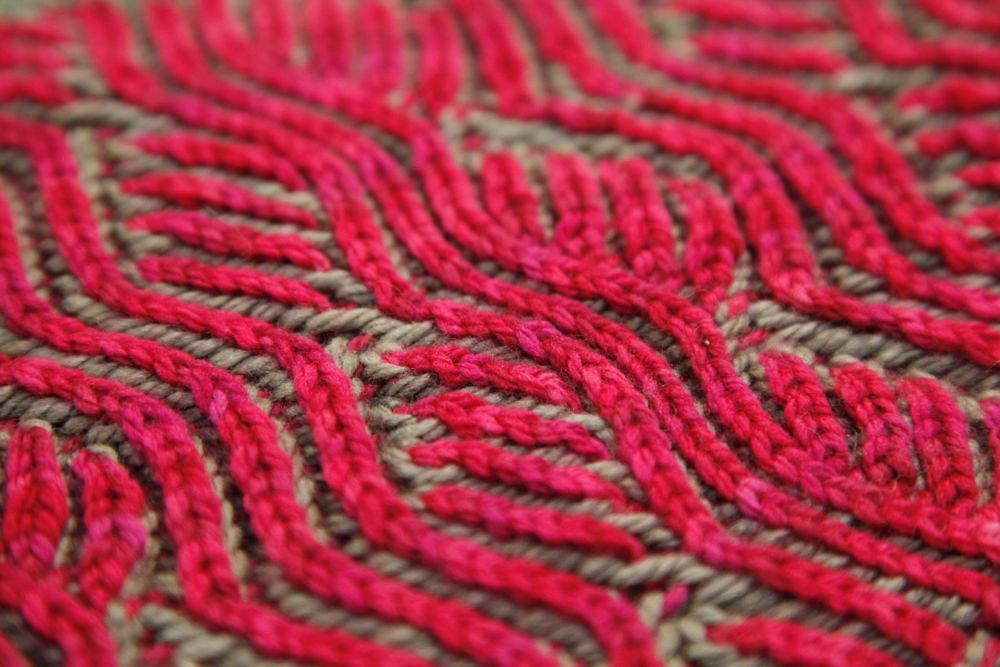As an American, I’m jealous of the cool things Europeans have. They have historical architecture. They have cool movies and actors. And of course, they have a European knitting technique or two.
When we talk about European knitting technique, we’re talking about more than just continental knitting and how to hold your needles. There are also specific stitches and styles hailing from Europe that anyone can benefit from. Get on-board with a European knitting technique and find out how it can improve your knitting.

Photo via Shutterstock
Why learn a European knitting technique?
The way you knit is perfectly fine, but have you ever wondered if it could be improved? Maybe you’d like to knit faster. Certain styles and techniques can change just a few small movements in your usual knitting to make those knits and purls fly.
If you ever experience pain when you knit, learning a new knitting technique might help with that, as well. Changing the way you move your wrist or fingers will work different muscles than the ones your usual knitting works, therefore giving those sore muscles a little break. Perhaps your usual knitting technique and style cause you to hold a lot of tension in your hands, too. Try another technique and you might find a new way of knitting!
A new technique might also help you achieve the correct gauge. Because different techniques may cause you to hold and wrap your yarn differently—and maybe even hold your needles differently—then your tension will also change. In that case, when you’re swatching endlessly and still can’t get the correct gauge, try switching your technique and see if that helps.
European knitting techniques to try
Continental knitting
The most famous of all European knitting techniques, continental knitting is a knitting style in which knitters hold the yarn in their left hands and pick the yarn when wrapping it. Not sure if you’re a continental knitter? Check out Improve Your Knitting to see Patty Lyons demonstrate and explain different knitting styles and methods, including continental.
German knitting technique
Oh, guess what? German knitting is the same as continental knitting! Get the low-down on the German knitting technique from Sarah to learn more.
Photo via Bluprint instructor Mercedes Tarasovich-Clark
Brioche knitting
In her research on the history of brioche knitting, Bluprint instructor Nancy Marchant found the stitch prevalent in many early European knitting books. At Bluprint, we’re using this technique on everything from hats to cowls and scarves. Ready to go European and try brioche? Nancy’s Explorations in Brioche Knitting and Mercedes Tarasovich-Clark’s Brioche Knitting Made Easy are both good places to start. (To tempt you even more, check out the close-up above of the Two-Color Brioche Vine Cowl exclusively from Mercedes’ class!)
Russian knitting technique
The Russians bring some beautiful things to knitting (I’m thinking Orenburg lace here!), and they also bring a very interesting technique for holding yarn and needles. The Russian knitting technique is not quite continental, but not quite English either. See Sarah’s demo of what the Russian knitting technique looks like and give it a try.
Norwegian knitting technique
The Norwegian knitting technique is actually very closely related to the Russian knitting technique. The yarn is held in the left hand and the right hand needle picks up the yarn. Let Sarah walk you through the Norwegian knitting technique and maybe you’ll start using it.


There's the lever knitting or 'cottage knitting' technique. When combined with a knitting belt, it allowed the knitters of Shetland to achieve speeds of over 200 stitches per minute. Even without the belt, an English style knitter can improve their speed and experience much less hand strain.